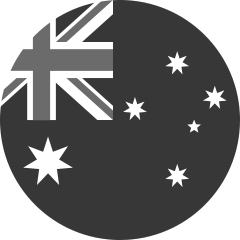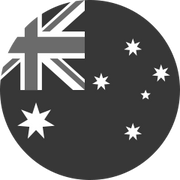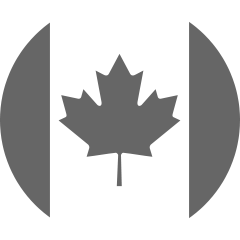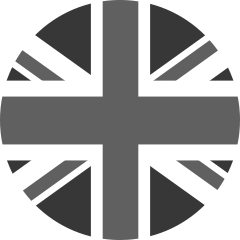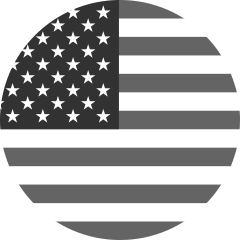Off-Season Training Tips from Professional Triathlete Hayden Wilde
New Zealand-born professional triathlete Hayden Wilde has an incredibly diverse range of accolades to his name, from securing a bronze medal at the Tokyo Summer Olympics to winning silver at the 2022 Commonwealth Games and even winning the 2021 XTERRA World Championships.
As he gears up for his coming race season and sets his sights on the Olympic Games in Paris, we spoke with Hayden about the importance of off-season swim training, how you can use this time to recover your mind and body, and his five key components of a successful off-season training plan.
Here’s what we learned.
Why is off-season training so essential for triathletes?
Hayden: As a professional triathlete, I race at least 10 to 15 times per year. It’s super hard to be at the peak of your game for all of those races throughout the season. Performing at that level takes a toll on your body and your mind. So, the off-season gives you a great opportunity to relax a bit while also starting to rebuild your base for the coming race season.
For me--and most triathletes--it’s really important to have those few months to focus on building a strong starting platform rather than focusing on speed and hitting your fastest times.
It's common for triathletes to feel physically and mentally fatigued after a race season. What are the keys to staying motivated for off-season training?
Hayden: You’ll definitely have some days where your motivation is a bit low, you’re tired, and it’s hard to get out the door to train. But getting out the door really is the hardest part.
One of the things I find helps me get over those draggy, tough periods is to sit back and think about the goals I’m working towards. Those goals can help you stay focused on the little things you need to do to get where you want to be.
I also find it’s really helpful to mix up your training regimen a bit and to do something out of the ordinary.
That might be going and training in a new place, if you’re able to do so, or training with someone you typically wouldn’t train with.
Most importantly, give yourself permission to do something else entirely. For me, I like to go for a coffee with friends, go fishing, do some work around the house, or play a round of golf with my coach--we get out on the course, banter, and have fun. It’s really helpful to find ways to balance out all of the hard work.
You need to have time to step back and relax.
With all of that being said, though, always try to remind yourself that it’s fun, even though it’s hard work. We all love triathlon because it’s fun, but we also love it because it’s challenging.

What are some important goals or areas of focus for off-season swim training? How can athletes decide where to focus their energy?
Hayden: off-season training provides me with a lot of important opportunities, including working on my weaker areas, and I’d recommend this for any triathlete as well.
For example, during my main race season, I typically struggle to get to the gym. It’s not motivating for me. But, during the off-season, I don’t mind it at all because I have some extra time and I’m not dealing with muscle fatigue.
This is a great opportunity for me to work on mobility and injury prevention, and those things can speak volumes in swimming, biking, and running.
I also like to put more focus on endurance and distance in my sessions rather than speed. This helps me to build a stronger base.
And, personally, biking and running are my strong suits. So, off-season training gives me a good opportunity to work a bit more on my technique in the water. I spend a lot of time using my FORM goggles to do things like dial in my head pitch and focus on elbow height in my strokes while worrying less about time and paces.
I’d recommend other triathletes approach off-season training the same way--take the opportunity to strengthen your weaknesses and focus on strength, mobility, and injury prevention.
How do you go about building on your strengths and optimizing your performance where you feel you need improvement?
Hayden: I work with my coach to do lots of analysis through racing--what could’ve been done better and what we can focus on as we head into next season.
Reviewing my data helps me identify things I can work on, from being more focused in the race to being more in tune with my training throughout the year to make sure I’m always as prepared as possible for race days.
Since I dedicate more focus to improving my swimming technique in the off-season, FORM’s HeadCoach technology has been really helpful for me. It has opened my eyes to a few things.
For example, my FORM goggles helped me realize that my time-to-neutral is extremely slow, so I’ve been spending this off-season working on improving that.
Some people may not be familiar with time-to-neutral, but it’s the percentage of your breathing stroke that it takes for your head to return to the water after your breath.
This is really important because timing your breath in sync with your swimming will allow you to keep your swimming continuous without breaking the coordination of your stroke. Taking too long to breathe, or breathing too early during your stroke, will break your swimming rhythm which will slow you down significantly.
The live feedback that HeadCoach provides makes this easier to work on since I generally swim solo.

How would you recommend balancing training and recovery in the off-season? What’s the best way to stay fit while minimizing the risk of injury or overtraining?
Hayden: Personally, I find this balance by implementing gym sessions and short runs into my off-season training. I do two gym sessions per week focused on mobility and strength.
You can tailor your gym sessions to your needs. For instance, if you want to improve your swimming strength, you can focus on your lats, triceps, and biceps. Or you can do a full-body workout including your arms, back, and legs.
This is enough to keep me feeling good, poppy, and ready to go.
It’s important to remember that your gym sessions aren’t an endurance drill. You don’t want to feel destroyed by the end of your workout. You just want to do enough to reduce the risk of injuries, increase mobility, strengthen the right muscles, and keep yourself feeling good.
If you’re up for it, you can implement a 30-minute run after your gym session as well.
On the other hand, I’d also recommend taking the time to get a massage every few weeks. Through the off-season, you’ll be putting in a lot of training hours--longer distance sessions to help build your base--and the tighter your muscles are, the harder it is to work through them.
In your opinion, what are the five key components of a successful off-season swim training program for triathletes?
Hayden: Everyone is different, but for me, I break my off-season training into five core components.
1. Reduced Speed
Unlike my main race season, I tend to focus less on speed and more on optimizing technique during the off-season.
2. More Endurance Sessions
While I’m reducing my focus on speed, I’m increasing my focus on endurance during the off-season. I like to implement longer rides and longer runs in respectable heart rate zones.
With these sessions, you’re not going out and smashing yourself. You just want to get the mileage in--we call this the junk mileage--because that helps you to build a better base.
3. Increased Gym Workouts
As I mentioned, I don’t typically spend a lot of time in the gym, but I do like to utilize my off-season training to focus on strength and mobility.
4. Relaxation and Leisure
Taking more downtime and finding a balance between life and training is crucial in the off-season. As I said, I like to spend more time with friends and family, doing things I enjoy away from training.
5. Training in Different Locations
It’s really important for me to mix things up during the off-season. Whenever I can, I like to go on a family holiday for a week or two and train somewhere else. I’m fortunate enough that I spend a lot of time in Europe and Andorra, and then I come back to New Zealand.
While it might not be realistic for everyone to take trips to other countries, it’s always nice to mix up the scenery when it comes to your training. It helps keep things interesting and exciting.

What role do FORM Goggles play in your off-season training?
Hayden: It’s been really great training with my FORM Goggles this year.
One of the biggest benefits for me is that they’re ideal for open water swimming because they allow me to see my strokes per minute without having to look at my watch, and this metric is a really important tool for me.
By focusing on strokes per minute, I can more accurately translate my pool swimming data into open water to ensure I’m training the right way.
Supercharge Your off-season Triathlon Training with FORM
Off-season training is essential to achieving your triathlon goals. And that’s where FORM’s Smart Swim Goggles come into play. With FORM, you can see real-time data and drills directly in front of your eyes while you swim. FORM googles are officially race-approved for use in SLT, USAT, PTO, and World Triathlon events. You can use the open water mode to see your stats while you swim and help you pace your swim leg perfectly.


